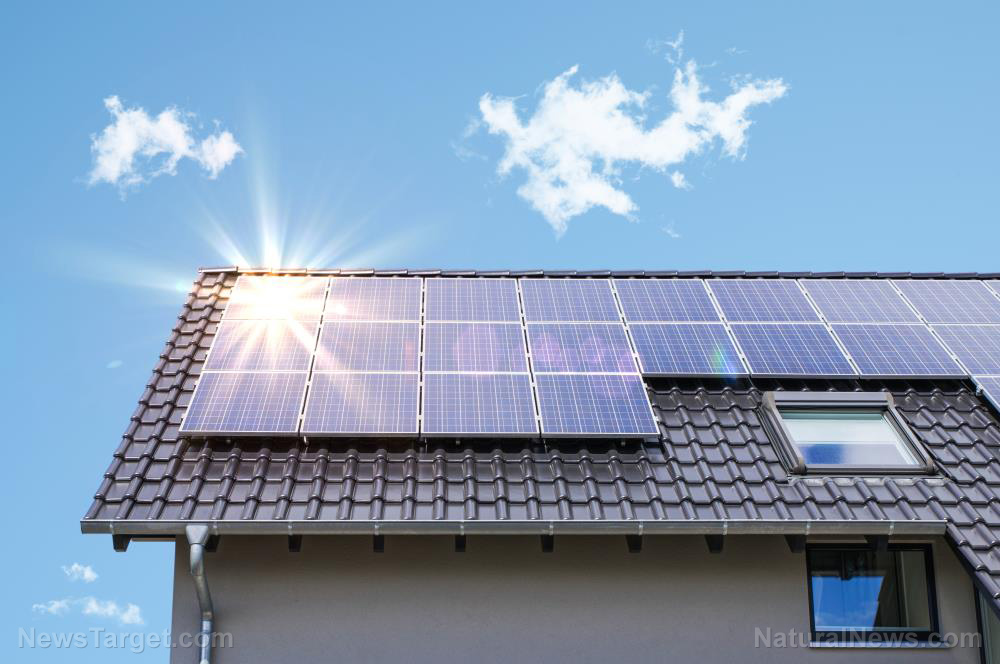Japan's ambitious leap into ultrathin perovskite solar panels: A new dawn for renewable energy
By kevinhughes // 2025-07-30
Tweet
Share
Copy

- Japan is investing in ultrathin, flexible perovskite solar panels to achieve net-zero emissions by 2050 and reduce reliance on Chinese solar technology. Their adaptability to curved/uneven surfaces makes them ideal for Japan's urban and mountainous terrain.
- Industry Minister Yoji Muto calls perovskite cells key to decarbonization and competitiveness. A ¥157 billion ($1B) subsidy supports Sekisui Chemical's factory to produce 100MW of panels by 2027, powering 30,000 households.
- Perovskite panels currently lag in power output, lifespan and contain toxic lead. However, experts like Hiroshi Segawa stress the urgency of societal implementation, citing domestic production as a security advantage.
- By 2040, Japan aims to deploy 20GW of perovskite panels (equal to 20 nuclear reactors), targeting 50 percent renewable energy coverage. Expo 2025 Osaka will showcase a 250-meter perovskite-paneled bus terminal roof as a proof-of-concept.
- Companies like Panasonic are developing perovskite-integrated smart windows. Sekisui Chemical plans commercial shipments by 2027, with lab efficiencies nearing 30 percent, potentially surpassing silicon panels.
A vision for the future: Overcoming challenges and embracing opportunities
Japan's ambitions extend beyond its borders. The country aims to install perovskite panels generating 20 gigawatts of electricity by 2040, equivalent to the output of 20 nuclear reactors. This would significantly contribute to Japan's goal of having renewable energy cover up to 50 percent of its electricity demand by 2040. At Expo 2025 Osaka, Japan is showcasing the potential of perovskite technology with a striking installation: A 250-meter bus terminal roof covered in over 250 ultrathin perovskite solar panels. Takayuki Taenaka from Japan's Ministry of Economy, Trade and Industry describes the technology as a triple threat – offering "multiple gains" by reducing reliance on Chinese imports, enabling urban solar deployment and advancing solar power innovation. Sekisui, the company behind the Expo installation, plans to begin commercial shipments by the end of this fiscal year, with full-scale production slated for 2027. Futoshi Kamiwaki, president of Sekisui Solarfilm, believes perovskite panels could surpass conventional solar cells in energy efficiency – with lab tests showing efficiencies nearing 30 percent. (Related: Belgian scientists successfully create 2-in-1 solar panel that also produces hydrogen.) The push for perovskite technology is not without collaboration. Major electronics brands like Panasonic are exploring integrating perovskite into windowpanes, envisioning a future where "all of these windows have solar cells integrated in them," as stated by Yukihiro Kaneko, general manager of Panasonic's perovskite PV development department. As Japan forges ahead with its perovskite ambitions, the nation is poised to set a precedent for the global adoption of this transformative technology. By embracing perovskite solar panels, Japan is not only advancing its own energy goals but also paving the way for a new era of renewable energy worldwide. Watch the video below about the super high-efficiency Panasonic HIT+ 96-cell 335W solar PV module. This video is from the PEG Solar channel on Brighteon.com.More related stories:
French startup opens world's first solar panel recycling factory to address "waste mountain" expected by 2050. US bans solar panel materials from Chinese company due to its use of slave labor. Pentagon's solar panel in space could one day supply electricity to any place on Earth. Sources include: JapanTimes.co.jp BusinessStandard.com Asia.Nikkei.com Brighteon.comTweet
Share
Copy
Tagged Under:
power grid Japan solar panels green living power electricity Panasonic inventions future science renewable energy breakthrough future tech silicon panels perovskite Green New Deal energy supply green tyranny new energy report Expo 2025 Osaka Sekisui Chemical Sekisui Solarfilm
You Might Also Like
Study: Fermented stevia extract can selectively kill pancreatic cancer cells
By Ava Grace // Share
Recent News
Former aide claims Netanyahu's first post-Oct. 7 priority was evading responsibility
By isabelle // Share
Mobility SOS: Decoding joint pain after 50 and the path to preservation
By willowt // Share
Kristi Noem declares endgame for Maduro as military pressure mounts
By jacobthomas // Share
Experts warn: Self-aware AI is a near-future desktop technology
By jacobthomas // Share
Microplastics invade reproductive organs—nature's colorful defense may be our best hope
By patricklewis // Share
The silent stressor: How marital strife is quietly damaging our hearts
By avagrace // Share











